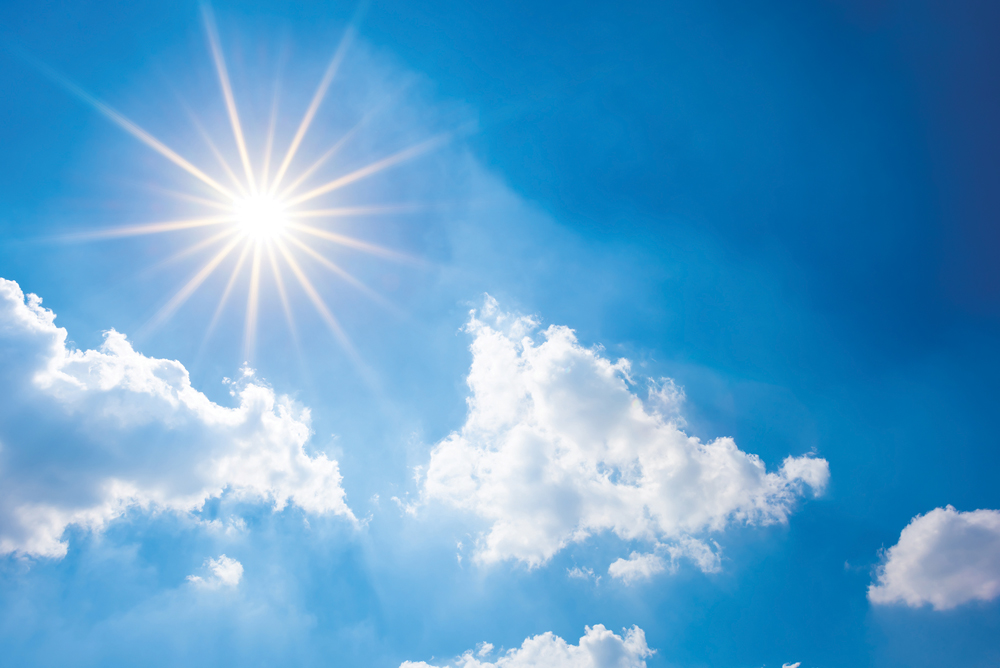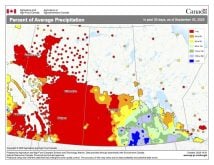At the time of this writing, there were just a few more days before being officially done with three types of winter seasons:
- Meteorological Winter (December, January and February)
- Astronomical Winter (Dec. 21 to March 21 approximately)
- The real winter, or what I call extended winter (November to the end of March.)
It is almost time to look back at this past winter to see how it stacked up, but first let’s look at how energy is transferred around our little planet.
This topic will allow me to answer a question I have received from a couple of people in the last few weeks: Why does it seem to be so darned windy all the time?
So far, in our meteorology 101 articles, we have looked at solar energy, seasons, the composition of the atmosphere and the absorption and reflection of solar energy. Now let’s look at what happens with the solar energy that is absorbed and how this absorbed energy is transferred from one area to another.
Read Also

Farmer gift idea: How about a weather station?
The 2025 holiday season is looming, and a home weather station might make a great Christmas gift for farmers
When energy is absorbed by an object, the molecules in that object are excited, which causes them to vibrate quicker. The faster they vibrate, the warmer the object will be.
When solar radiation strikes an object, that energy will either be reflected, which means no energy is transferred to the object (no heat), or the object will absorb some of the light energy, exciting the molecules and making them vibrate faster, and thus heating up the object.
I think that is fairly straightforward and makes sense. The next question is, how does this heat energy get transferred from the object to the atmosphere?
The answer lies within four different processes: conduction, convection, advection and latent heat transfer.
Conduction is the simplest process to understand. It is the transfer of energy from one molecule to the next. As solar energy strikes a surface, the molecules in that object gain energy and they begin to vibrate faster and faster. The object warms up.
If you were to put your hand on that object, the molecules on its surface would be vibrating next to the molecules in your hand and some of that energy would be passed to the molecules in your hand. Because the molecules in your hand are vibrating faster, your hand will begin to feel warm. This is conduction of heat – the transfer of heat from one object to another that is directly in contact.
When we look at the Earth, solar energy strikes the Earth’s surface, causing the molecules to vibrate and heat up. The molecules in the air immediately over the ground surface begin to vibrate faster as they bump into molecules in the ground and thus heat up.
This process is only able to heat about the bottom two centimetres of the atmosphere. As we all know, air is a good insulator, and that is how insulation works, by trapping pockets of air. So, if air is not good at conducting heat, how does this heat get transferred throughout the atmosphere?
You probably guessed it. This is where convection, advection and latent heat transfer come in.
Basically, convection and advection are similar. They both refer to the physical mixing of the atmosphere. Convection is when the mixing occurs primarily in a vertical direction and advection is when it occurs primarily in a horizontal direction.
Convection has to do with density and the fact that less dense objects are more buoyant. When part of the atmosphere is heated through conduction, the molecules are vibrating faster, and that faster motion also means they need more space around them.
Taking up more space means there will be fewer molecules in a given area. Since density is calculated by dividing mass by volume, fewer molecules (less mass) in a given volume of air would result in a lower density of that air.
Because the air is now less dense than the air above it, that air will begin to rise, taking heat energy from the surface of the Earth and moving it into the atmosphere. As this air rises, new air needs to move in from the surrounding area.
Since air is rising, and new air cannot come out of the ground, the air comes in horizontally or “advects” in. This horizontal movement of air to replace rising air is one of the key factors that gives rise to wind.
If we go back to the example of insulation, the small pockets of air in the insulation minimize the amount convection or advection that can take place, which keeps heat from being easily transferred. That is why an empty cavity in a wall is not a good insulator because of the transfer of heat through convection and advection.
The final process for moving heat energy is latent heat transfer. The term latent means that something potentially exists but is not currently in existence or realized. In latent heat, we have heat that exists it is not actually present as heat – yet.
How does this work? It has to do with water and the fact that it takes heat energy to turn water from a liquid to a gas. As water absorbs solar energy, the molecules get excited and vibrate faster and faster. Eventually the molecules at the surface of the water will vibrate fast enough to break free from the rest of the water molecules and float away. It is now a gas.
The heat energy it took to cause the liquid water molecule to become a gas molecule is still contained within the gas molecule. The potential energy is there.
That water molecule floats away from where it acquired its heat energy, and at some point, it will begin to lose some of its energy and cool down. As it cools, it will eventually condense back into a liquid and at that point it will release all the heat energy it took to evaporate the water in the first place. This is the latent heat of vaporization. Since it took a lot of heat to evaporate the water, it releases a lot of heat when it condenses. We will explore this concept more in a future article.
















